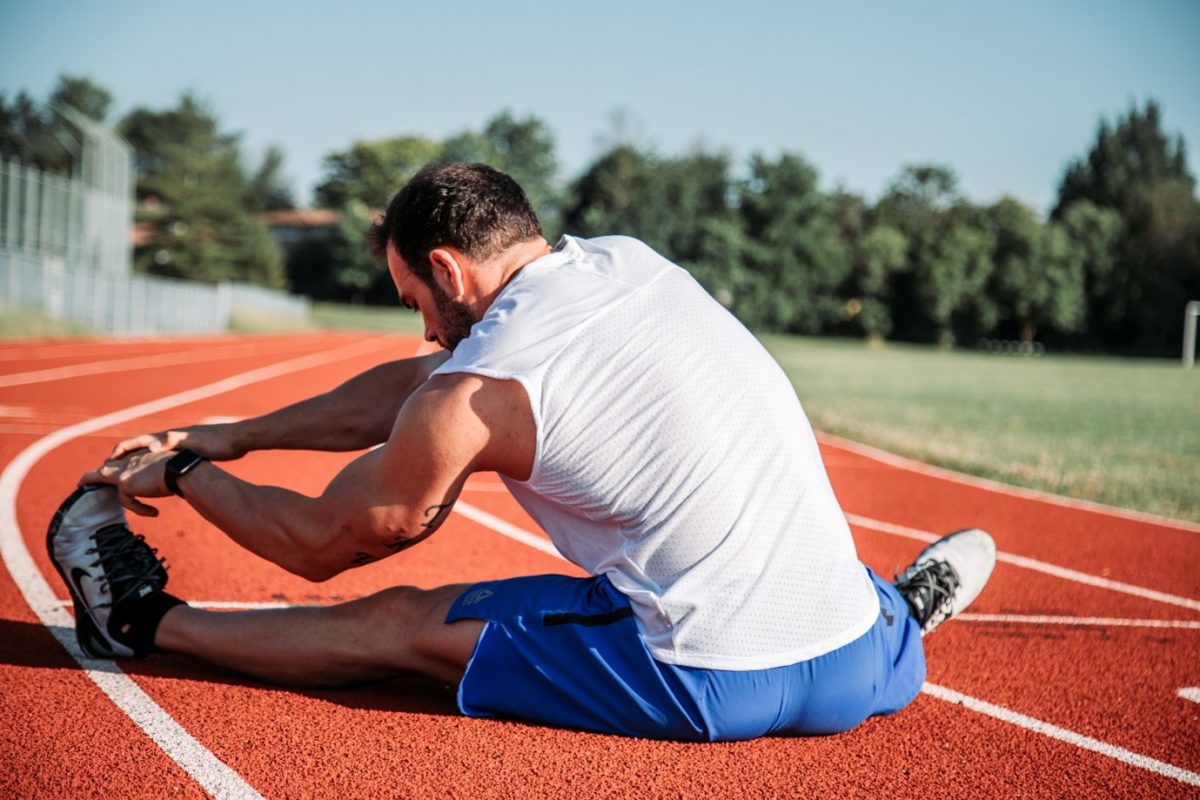Whether and how stretching has a positive effect on athletes is controversially discussed. The Benefits of stretching are unclear. Sports physician Roberto Llano* explains the most important points.
For many years, the opinion was held that consistent that there are many benefits of stretching. Stretching the muscles before and after any sporting activity could help improve mobility and therefore also prevent injuries. Therefore, as early as PE classes, children are taught stretching exercises that are later performed in recreational sports. But does stretching actually make you more flexible, more resilient and faster?
Until the 1980s, little attention was paid to stretching from a sports medicine perspective. However, the stretching exercises carried out up to that time (modernly referred to as dynamic stretching) in the run-up to sporting exertion then came under increasing criticism because it was assumed that this stretching, characterized by springs or rocking, triggered the stretching reflex in the muscles, which was considered to be injury-prone and counterproductive for the stretching effect in the muscle tissue. This brought static stretching to the center of attention. It was only later that various other techniques were added such as tension-relax stretching (CR stretching or contact-relax stretching) or antagonist tension stretching (AC stretching). It was assumed that these methods would no longer trigger the stretch reflex. However, it has since been shown electromyographically that neither static nor dynamic stretching can completely prevent the stretch reflex and that static stretching does not provide a significant advantage over other methods.
Research is still unclear
Various studies attempted to investigate the effects of stretching on various performance parameters such as agility and speed, but also on the incidence of certain injuries. The results showed only that no generally valid statements can be made. In the studies, whether there were benefits of stretching or not depended on numerous factors such as the selection of subjects (competitive athletes, recreational athletes, elite athletes), the frequency and intensity with which the stretching exercises were performed, the manner in which the stretching exercises were performed, the timing (before or after training or independent of training sessions), and the type of sport practiced. Based on current studies, the following statements can be made regarding stretching:
- There is evidence that submaximal stretching can protect against muscle injuries (muscle strains). However, no positive effects have been found for bone or tendon injuries.
- Stretching does not protect against muscle soreness either before or after exercise. In fact, stretching in the case of muscle soreness can even increase it.
- Sports that require maximum flexibility (such as acrobatic or gymnastics), intensive stretching is necessary and essential.
- In sports where quickness is a key component, there is evidence that stretching leads to a decrease in quickness. However, these studies are controversial and probably also dependent on how intense, how long, and with how many repetitions stretching is performed. Toning exercises after completed stretching are likely to reverse the negative effect on fast strength. On the other hand, submaximal stretching is likely to be recommended in the aforementioned high-speed disciplines to avoid muscle injury.
- In sports where stretching improves the range of motion and thus the acceleration distance of a limb (e.g., impact sports such as tennis or badminton), short-term intensive stretching is likely to be beneficial and performance-enhancing.
When to stretch?
Maintaining the mobility of joints and muscles is a prerequisite for healthy movement behavior. And this, in turn, protects against various musculoskeletal problems that occur more frequently with age. A stretching programs practiced independently of any sporting activity are therefore generally recommended. For amateur athletes, the following recommendations apply:
- You should not feel any pain when stretching. Everyone has an individual, anatomically predetermined range of motion. you should not exceeded your range of motion. Not everyone is equally stretchy and mobile.
- Stretching also serves the purpose of relaxation, so it is important to perform the exercises in a concentrated manner and to be aware of your body.
- Immediately before a workout, you should not do passive-static stretching, as most do in the run-up to a competition. This type of stretching is only useful after the workout.
- Before a competition, on the other hand, a loose warm-up including gymnastic exercises is recommended in order to get both the musculoskeletal system and the circulation going.
* Dr. med. Roberto Llano is a specialist FMH for general internal medicine and sports medicine SGSM. Roberto Llano is a team doctor for the snowboard federation, the national soccer team U15-U20, the national ju-jitsu team and the national BMX team of Swiss Cycling and works as head physician at Medbase Bern.
This Blog Article was made available to us by Fit for Life. Fit for Life is the Swiss magazine for fitness, running and endurance sports. Would you like to read such articles regularly? Then Click here.

